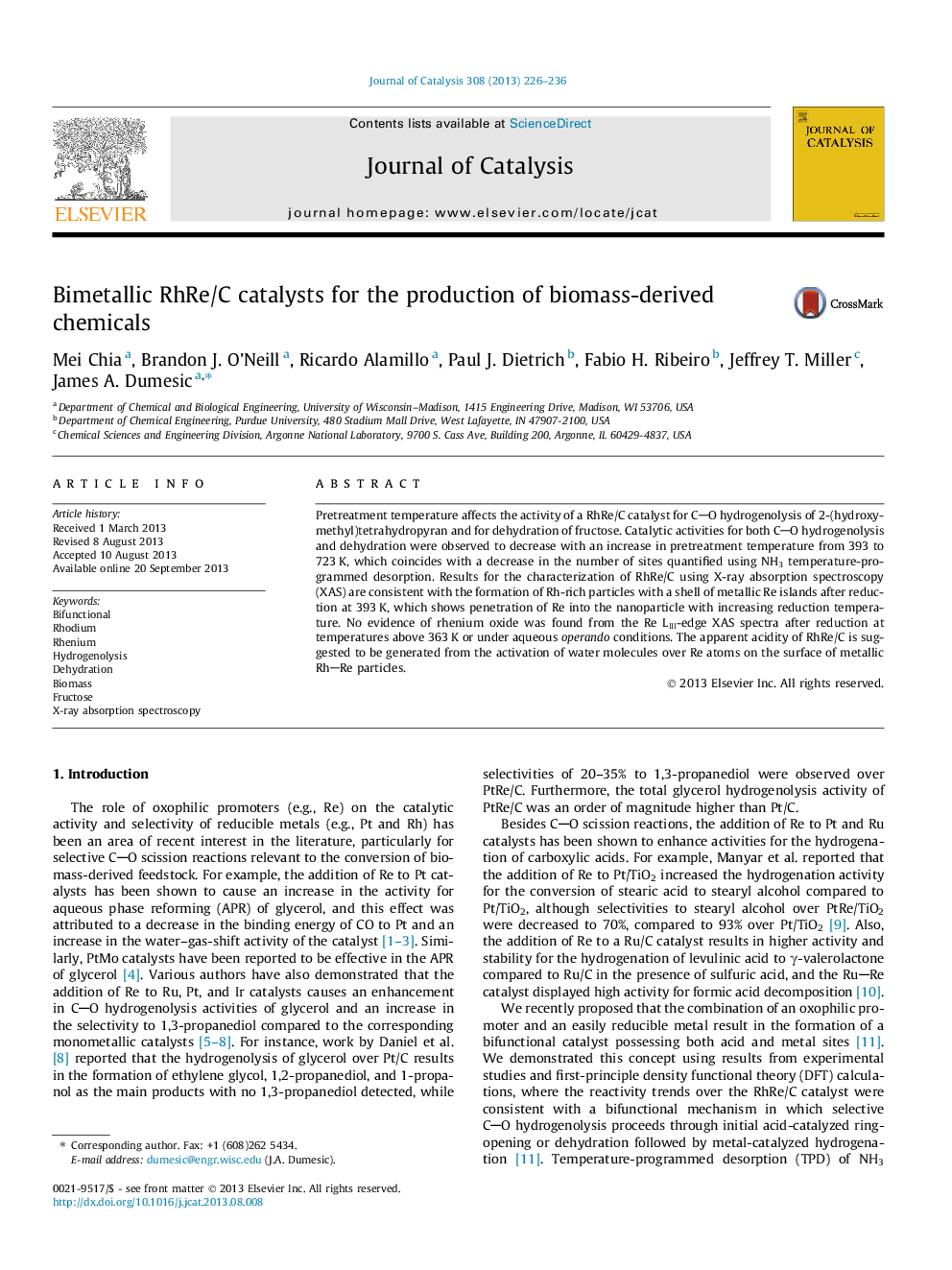| کد مقاله | کد نشریه | سال انتشار | مقاله انگلیسی | نسخه تمام متن |
|---|---|---|---|---|
| 61200 | 47569 | 2013 | 11 صفحه PDF | دانلود رایگان |

• Selective CO hydrogenolysis and fructose dehydration over bifunctional RhRe/C.
• Decreased activity and number of NH3 titrated sites with increased reduction T.
• In situ XAS results show increased extent of alloying with increased reduction T.
• No evidence of rhenium oxide under liquid water operando conditions.
• Metallic Re on surface of Rh particles activates water creating Brønsted acid sites.
Pretreatment temperature affects the activity of a RhRe/C catalyst for CO hydrogenolysis of 2-(hydroxymethyl)tetrahydropyran and for dehydration of fructose. Catalytic activities for both CO hydrogenolysis and dehydration were observed to decrease with an increase in pretreatment temperature from 393 to 723 K, which coincides with a decrease in the number of sites quantified using NH3 temperature-programmed desorption. Results for the characterization of RhRe/C using X-ray absorption spectroscopy (XAS) are consistent with the formation of Rh-rich particles with a shell of metallic Re islands after reduction at 393 K, which shows penetration of Re into the nanoparticle with increasing reduction temperature. No evidence of rhenium oxide was found from the Re LIII-edge XAS spectra after reduction at temperatures above 363 K or under aqueous operando conditions. The apparent acidity of RhRe/C is suggested to be generated from the activation of water molecules over Re atoms on the surface of metallic RhRe particles.
An increase in reduction temperature results in a decrease in activity of a RhRe/C catalyst for CO hydrogenolysis and fructose dehydration. NH3 TPD and in situ XAS measurements indicate that an increase in reduction temperature is accompanied by a decrease in surface Re species on Rh particles. Re atoms on the surface of Rh particles likely activate water, thereby creating Brønsted acid sites.Figure optionsDownload high-quality image (63 K)Download as PowerPoint slide
Journal: Journal of Catalysis - Volume 308, December 2013, Pages 226–236